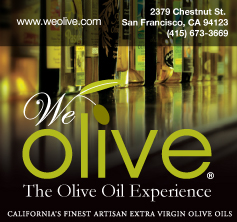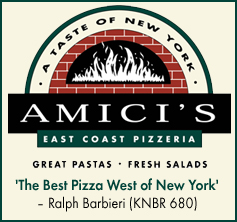A while back, as a possible idea for a book, I made up a list of what I called “Unlikely Heroes in the Gastronomic Trenches,” and I included my father.
Fathers are not always heroes to their sons, but mine was – an unlikely one perhaps. He was not a war hero, a World Series pitcher, a famous author, or a rock star. He was a cook.
My father, Joseph, came to the United States from Alsace in 1912 on the steamer Noordam. He was 15. His father, Anton, was a baker in the storybook village of Obernai, not far from Strasbourg. So Joseph worked in the family bakery, which was on the ground floor of a four-story, half-timbered house. He and my grandfather made bread and hard rolls in the middle of the night in the bakery’s huge, wood-burning oven, and during the morning hours the oven still held a high heat. On Sundays on their way to church, Obernai hausfraus would drop off baeckeofe (baker’s oven) – sliced potatoes and onions, with whatever meat had been available, and liberally doused with an Alsatian white wine. It was my father’s job to slide these casseroles into the oven. Following mass, the hausfraus would pick up the bubbling and steaming casseroles and carry them home for early Sunday afternoon dinners.
When he was still a youngster, my father began experiencing the inevitable itch we all recognize as wanderlust. He talked his father into allowing him to travel to America. So my father secured a letter from his schoolmaster and another from the parish priest. The letters attested to my father’s good character, studiousness, and how he served the church faithfully as an altar boy. A few months later Joseph Anthony Beyl shipped out from Marseilles with a small group of like-minded Alsatians bound for America.
Tangled and mangled by history, sometimes French and sometimes German, Alsace was part of the German Vaterland during my father’s time there. Throughout his life he was strongly Germanic in his attitudes and bearing. I suppose I am too, but we don’t need to go into that now.
When the Noordam arrived in New York, and after the paperwork and medical exams were completed, my father was off to Manhattan’s Lower East Side to a boardinghouse full of Alsatians. A few days later, he had a job in Manhattan’s Hotel Astor as a baker’s assistant. Need I say that the Hotel Astor’s pastry chef was Alsatian? Within a year, Joseph took the train to Philadelphia, where the chef de cuisine at the Bellevue Stratford – yes, another Alsatian – signed him on as a kitchen helper. Later he moved on to Minneapolis where he worked in a hotel kitchen for a time.
In 1916, Joseph Beyl, then 19, had been in the United States four years. Meanwhile, war had broken out in Europe, preventing his return to Alsace. He decided to journey westward by train to San Francisco. On arrival at the end of the rail line, Oakland’s train station known as the Mole, Joseph took a ferryboat across San Francisco Bay and disembarked at the Ferry Building. From there he made his way on foot up Market Street, turned right on Powell, and walked into the tradesman’s entrance of the St. Francis Hotel to see the chef, Victor Hirtzler, who was to become his mentor. Hirtzler was a flamboyant Alsatian, already well known as a chef – in fact he was a forerunner of what we today call celebrity chefs. He agreed to see my father and with a touch of old-country camaraderie, hired him as a lowly commis, a kitchen trainee.
Apparently Hirtzler found my father not only a compatible Alsatian but also a loyal student in the kitchen and a hard worker. He pushed and promoted him, eventually making him his sous chef. The two worked together until 1925 when hot-tempered Hirtzler quarreled with hotel management and decided to move on. But before he left, he recommended his sous chef to a position as chef de cuisine at the Hotel Californian in Fresno. My father got the job. Hirtzler went back to Strasbourg in Alsace, where he died in 1931.
Meanwhile, my father flourished as a chef and married a nice German-American girl in Fresno, which explains how I happened to be born there. Then in 1930, my father heard about a chef job in San Francisco at the prestigious Alexander Hamilton Hotel. According to my father, it was mention of his work experience with Victor Hirtzler that sealed the deal. Joseph Beyl worked as a chef in and around San Francisco until he retired when he was 75. He died in 1989 at 93 – my top candidate as an Unlikely Hero in the Gastronomic Trenches.
Here is my father’s recipe for baker’s oven:
Chef Joseph Beyl’s Baeckeofe:
An Alsatian Chef’s Recipe for Baker’s Oven, a Potato Casserole
Serves 4 to 6
My father used a cast-iron casserole, but I prefer a Pyrex casserole.
4 to 5 potatoes (White Rose)
2 large onions (yellow or white)
1 5- to 6-ounce piece
Gruyère cheese
Olive oil (or canola oil)
Salt pork
½ cup flour
Butter (unsalted)
Salt and pepper
¾ cup plus ¼ cup chicken broth (canned or homemade)
¾ cup plus ¼ cup white wine
(preferably Alsatian, like
Gewurztraminer, Sylvaner or Riesling)
Peel and slice potatoes in ⅛ or ¼-inch circles. Peel and slice onion in ¼-inch rounds. Slice cheese into 12 to 15, thin slices about ⅛-inch thick. Rinse salt pork and cut into lardons (small cubes) so you have about two dozen.
Preheat oven to 300 degrees.
Heat oil in a sauté pan and sauté salt pork lardons until brown but not crisp. Remove with a slotted spoon and set aside.
Lightly butter the casserole dish. Place ingredients in casserole as follows:
• A few salt pork lardons
• A layer of potatoes
• A few sliced onions
• Four to six slices of cheese, fanned out
• A dusting of flour
• Three or four small pieces of butter
• A twist or two of fresh- ground pepper
Repeat layering sequence until all salt pork lardons, potatoes, onions, and cheese slices are used. Don’t forget to dust with flour and dot with butter after each cheese layer. Top with several twists of fresh-ground pepper. Pour ¾ cup chicken broth over the top so it trickles down through each layer. Add ¾ cup white wine.
Bake for 45 minutes covered in 300-degree oven. Check the casserole occasionally to make sure the wine and broth have not evaporated. Add the remaining ¼ cup wine and broth if needed.
Check potatoes with knife to see if done – still somewhat firm but not soft. Uncover casserole and continue to bake for 10 to 15 minutes more.
Options: Meat may be added to the casserole. Perhaps ¾ pound of beef chuck, cut in small one-inch pieces and browned first. Or leftover beef, lamb shoulder, or even chicken. Pork shoulder, bratwurst or garlic sausages cut in rings are nice as well; however, the addition of meat is not necessary. Beef broth may be substituted for the chicken broth.
Ernest Beyl is a regular contributor to Northside San Francisco. E-mail him at beyl@earthlink.net.









